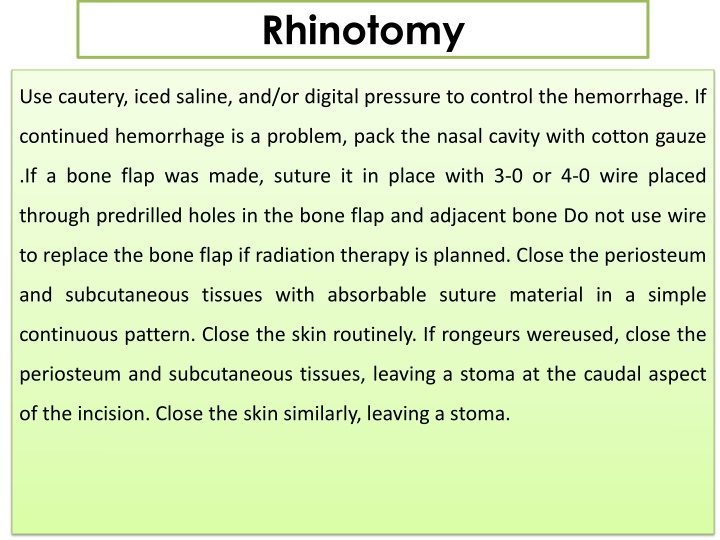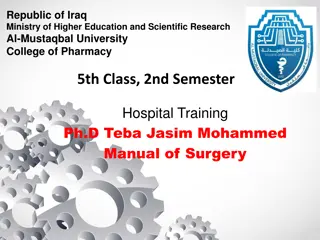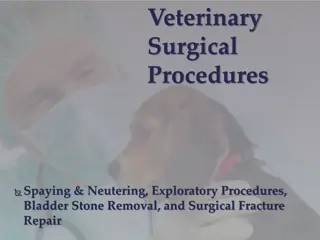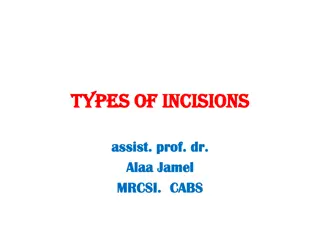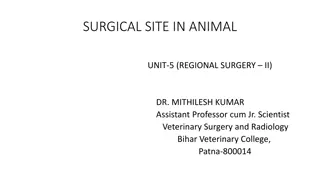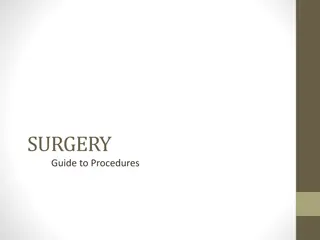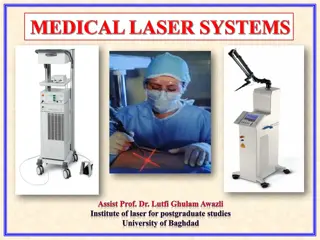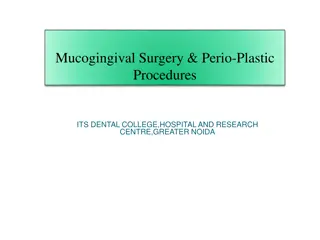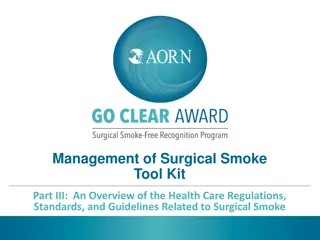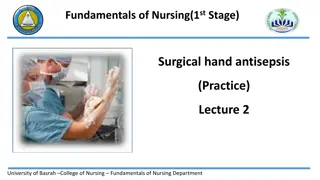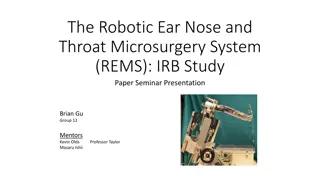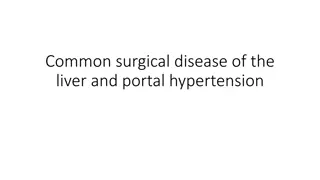Surgical Approach and Management for Rhinotomy Procedures
A detailed guide on performing rhinotomy procedures, including ventral and lateral approaches, with step-by-step instructions on control of hemorrhage, tissue exploration, and closure techniques. The article also covers Brachycephalic syndrome, explaining stenotic nares, elongated soft palate, and everted laryngeal saccules causing upper airway obstruction in brachycephalic breeds.
Download Presentation

Please find below an Image/Link to download the presentation.
The content on the website is provided AS IS for your information and personal use only. It may not be sold, licensed, or shared on other websites without obtaining consent from the author.If you encounter any issues during the download, it is possible that the publisher has removed the file from their server.
You are allowed to download the files provided on this website for personal or commercial use, subject to the condition that they are used lawfully. All files are the property of their respective owners.
The content on the website is provided AS IS for your information and personal use only. It may not be sold, licensed, or shared on other websites without obtaining consent from the author.
E N D
Presentation Transcript
Rhinotomy Use cautery, iced saline, and/or digital pressure to control the hemorrhage. If continued hemorrhage is a problem, pack the nasal cavity with cotton gauze .If a bone flap was made, suture it in place with 3-0 or 4-0 wire placed through predrilled holes in the bone flap and adjacent bone Do not use wire to replace the bone flap if radiation therapy is planned. Close the periosteum and subcutaneous tissues with absorbable suture material in a simple continuous pattern. Close the skin routinely. If rongeurs wereused, close the periosteum and subcutaneous tissues, leaving a stoma at the caudal aspect of the incision. Close the skin similarly, leaving a stoma.
Rhinotomy Ventral approach to the nasal cavity. With the animal in dorsal recumbency make a midline incision in the hard palate. Elevate the mucoperiosteum of the hard palate laterally to the alveolar ridge. Be careful to spare the palatine nerves and vessels as they emerge from the major palatine foramen. Incise the mucoperiosteum and soft palate attachments to the caudal edge of the palatine bone, and extend the incision as far caudally as necessary into the soft palate (full thickness). Retract the edges of the incision with stay sutures. Remove the palatine bone with a power- driven burr or rongeurs and discard it .
Rhinotomy Ventral approach to the nasal cavity. Explore the nasal cavity and remove abnormal tissues. Submit tissues for histologic examination and culture. Close the nasal mucosa of the soft palate with absorbable material in a simple continuous or simple interrupted pattern. Then close the submucosa-periosteum of the hard palate with absorbable suture in an interrupted pattern. Finally, close the oral mucosa of the hard and soft palates with monofilament nonabsorbable sutures in a simple continuous pattern.
Rhinotomy Lateral approach , Make an incision with a scalpel or Mayo scissors. When using scissors, insert one blade into the nostril and position it so the incision will be made ventral to the nasal planum and the dorsal lateral nasal cartilage. Angle the incision in a dorsocaudal direction toward the nasomaxillary notch. Incise through all layers and retract the tissue dorsally to expose the vestibule. Explore and resect or biopsy abnormal tissue. Appose the nasal mucosa with 3-0 or 4-0 monofilament absorbable suture. Place two to four sutures in the musculocartilage layer (3-0 or 4-0 monofilament absorbable), and then reappose the skin (3-0 or 4-0 monofilament nonabsorbable).
Brachycephalic syndrome Brachycephalic syndrome: refers to the combination of stenotic nares, elongated soft palate, and everted laryngeal saccules causing upper airway obstruction in brachycephalic breeds; it is also referred to as brachycephalic airway syndrome or brachycephalic airway obstructive syndrome. - Stenotic nares, are nostrils with abnormally narrow openings that make the nostrils appear pinched together. - Elongated soft palate, is one that extends more than 1 to 3 mm caudal to the tip of the epiglottis. -Everted laryngeal saccules, are protrusions of the mucosal diverticula rostral to the vocal folds; they are also referred to as laryngeal saccule eversion or stage 1 laryngeal collapse.
